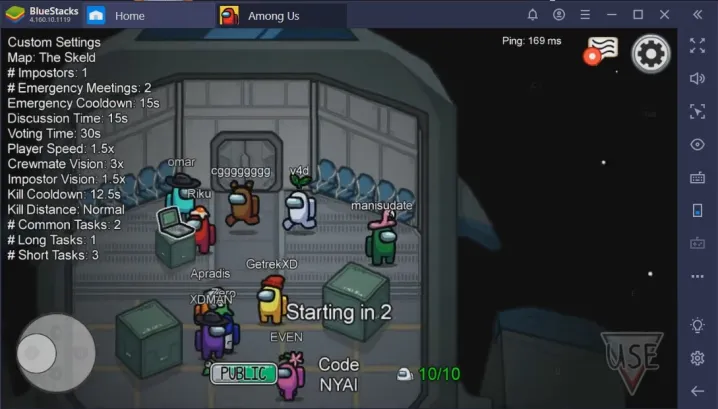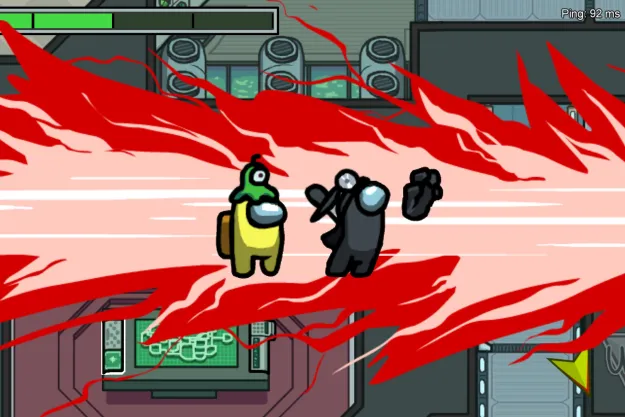One reason Among Us was able to grow so popular in 2020 is that the lightweight game can run on nearly everything, as long as your internet connection is good enough. That, plus the friendly animated style, makes traditional settings like resolution less important for the massive multiplayer hit.
However, Among Us has another, very important list of settings for how a specific game will be played. You’ll find these options in the customization section where you can alter colors, hats, and pets, but the game settings have a far more important impact: They allow you to pick cooldowns, tasks, emergency meetings, and other limitations that decide just how the session will play.
That’s a lot of choices, especially for newcomers. We’re making it easy by running down our suggested settings for a great game and which settings can really make a difference in gameplay. We’re also assuming that you have a group of at least eight people for these games, as smaller groups should find customizations that fit their unique needs.
Further reading
- Among Us: Essential tips and tricks for crewmates and imposters
- Everything we know about Among Us cross-platform support
- Among Us gets surprise release on Nintendo Switch today, Spelunky 2 set for 2021

Imposters
Choose two. Two imposters are just right for groups of eight or more. You can choose up to three, but this tends to be more of an imposter advantage and less equal gameplay — although it’s a nice way to help new players learn how imposters work.
Confirm Ejects
Turn it off. Particularly for more experienced groups, confirming ejects (identifying if they were an imposter or not after they’re dumped into space) can spoil some of the suspense and second-guessing the game while making more complex strategies difficult. Only confirm ejects if the entire team prefers it that way.
Number of Emergency Meetings
Leave this at two, at least when you first start playing. This creates enough potential for discussion and discovery while still allowing imposters to sow chaos and creating some natural time limitations.
Emergency Cooldown
This refers to how long players have to wait between calling emergency meetings. It’s not always an important consideration, but when it is, it really matters. We suggest setting it for 20 seconds.
Player Speed
Player speed is an entirely optional setting. Keeping everything at normal speed is fine, especially for newer players. Experienced players may want to set the speed at 1.25x just to speed things up, but it’s not necessary and shouldn’t be a priority.

Discussion Time
This is how long a meeting lasts before a vote occurs. It’s an important setting that is also often group-dependent. Some groups thrive with shorter, more intense discussion times, while others find it a complete disaster. We suggest setting it somewhere between 30 and 45 seconds at first, then going from there.
Voting Time
Voting time is the window after a meeting where everyone can vote. They can also keep discussing during this time, so it’s good to think of it as an extension of discussion time when everyone starts making their decisions and finishing their points. Some like short voting times, others like long voting times — there’s no perfect answer.
We suggest sticking with a short voting time of around 30 seconds if you already have a longer discussion time or going with a short discussion time and then a longer voting time of 60 seconds or more. Both options yield different gameplay, but we like to think of voting time as a shorter “final appeal” window rather than the extended bait-and-switch session it can become.
Crewmate Vision/Light
Stick with 1.00x to 1.25x. Crewmates are ordinary workers with basic vision.
Imposter Vision/Light
It should always be higher than crewmate vision. Most groups find 1.5x to 1.75x works best, allowing imposters to plan and move effectively.
Kill Cooldown
The kill cooldown for imposters should always be longer than the meeting cooldown to allow for quick responses from the crew. So, if the meeting cooldown is 20 seconds, make the kill cooldown 25 to 30 seconds. Expert teams may prefer a cooldown within just a couple of seconds from the meeting cooldown to make things more intense.
Kill Distance
Set it to short or medium. Imposters should have to get close to a victim before successfully killing them. Note that with experienced imposters and crew, the kill distance can become a significant factor in gameplay.

Visual Tasks
This is the ability for players to see other tasks being performed, confirming who is doing their tasks and who isn’t (imposters don’t do tasks). Playing without visual tasks turned on is an interesting challenge, but we suggest enabling visual tasks for the best results.
Common Tasks
Common, long, and short tasks all exist in a sort of balance between each other. Adding more of one means there should probably be fewer of the others. Common tasks, which everyone has to do, give crewmates a big advantage because it’s easy to see if imposters aren’t performing the task with everyone else. Brand new teams may want to set common tasks to two, but otherwise, we suggest keeping it to only one common task.
Long Tasks
Long tasks have multiple stages and take more time to complete. Set long tasks to either one or two. If players like faster games, long tasks should be set to one all the time.
Short Tasks
Set these depending on your long tasks. If you have two long tasks, only set two short tasks. If you are keeping long tasks at one, set short tasks to three, and feel free to adjust as your team finds a preference.
Editors' Recommendations
- The best Power Armor in Fallout 4 and where to find each set
- Fortnite performance guide: best settings, fps boost, and more
- The 6 best Xbox Series X headsets for 2024
- The Last of Us finale makes a subtle change from the game to set up season 2
- Forspoken settings: change these settings for a better experience




